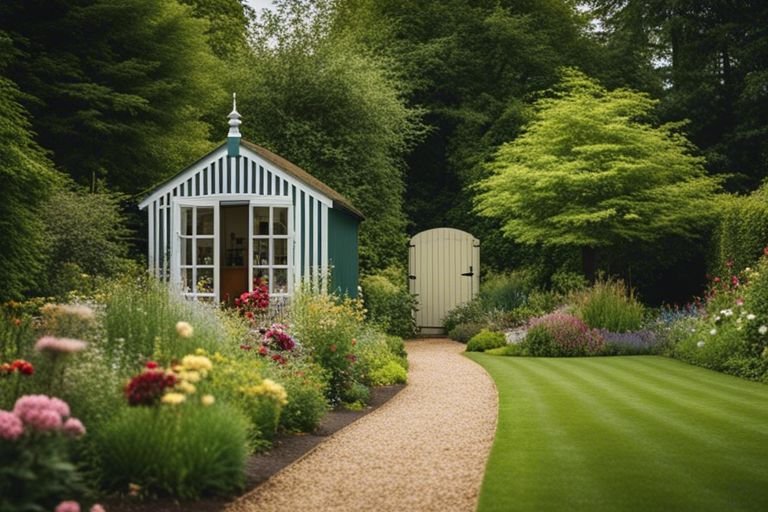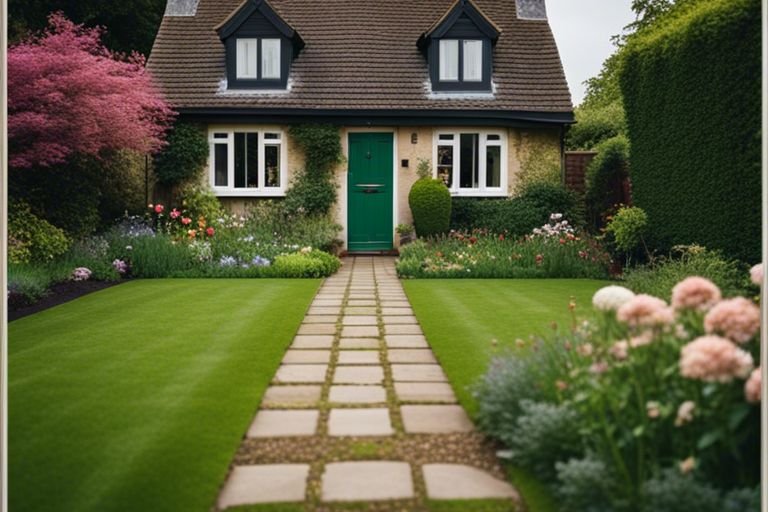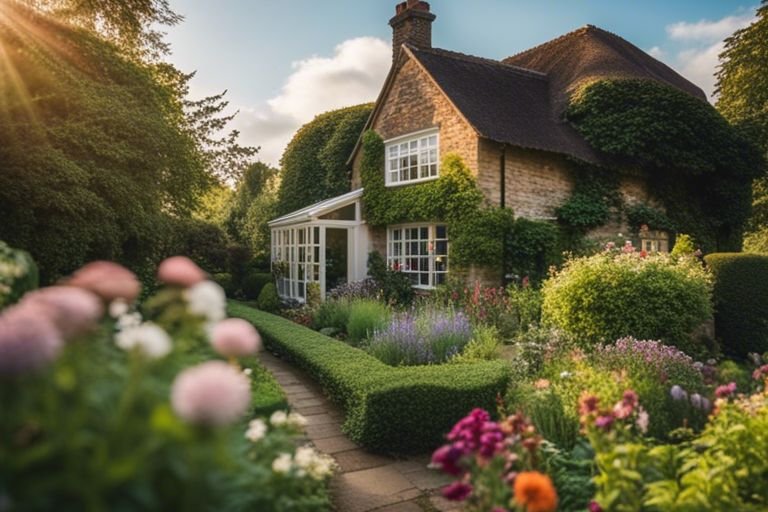Most British gardens hold a special charm – a perfect blend of elegance and wilderness. To achieve a picture-perfect UK garden, follow these tips inspired by the renowned British gardener, Monty Don. From choosing the right plants for the temperate UK climate to creating a cozy garden nook, this guide will help you transform your outdoor space into a beautiful sanctuary. Embrace the quintnecessary British gardening style and get ready to enjoy your own slice of paradise right at home.
Assessing Your Garden
For a Picture Perfect Garden, the first step is to assess your garden thoroughly. Understanding your garden’s unique characteristics will help you cultivate a beautiful outdoor space that thrives. To begin, consider enrolling in a course on Picture Perfect Plants to enhance your gardening knowledge and skills.
Evaluating Your Climate and Soil
Any successful garden design starts with evaluating your climate and soil. Take note of the type of soil in your garden, whether it’s clay, sandy, or loamy, as this will impact the types of plants that will thrive. Consider the microclimates within your garden, such as sunny spots or shaded areas, and choose plants accordingly to ensure they receive the appropriate light and moisture levels.
Identifying Your Garden’s Unique Features
Assessing your garden’s unique features is important for creating a Picture Perfect Garden. Take a closer look at existing elements such as mature trees, natural slopes, or water features, and incorporate them into your garden design. By identifying and working with these features, you can enhance the overall beauty and character of your outdoor space.
Choosing the Right Plants
Native Plants for a Traditional UK Look
Assuming you want to create a picture-perfect UK garden, choosing native plants is a great way to achieve a traditional UK look. Native plants like lavender, foxgloves, roses, and holly can add a touch of British charm to your garden. These plants not only thrive in the UK climate but also attract local wildlife, adding life and movement to your outdoor space.
Incorporating Color and Texture with Flowers and Shrubs
Choosing the right flowers and shrubs can add a pop of color and texture to your garden. Look for a mix of seasonal flowers like daffodils, tulips, and dahlias to ensure year-round interest in your garden. Shrubs like hydrangeas, lavender, and butterfly bush can create a beautiful backdrop and bring depth to your planting beds.
When opting for flowers and shrubs, consider the color palette you want to work with. Whether you prefer a monochromatic scheme or a vibrant mix of hues, make sure the plants you choose complement each other and create a harmonious overall look in your garden.
Don’t Forget the Herbs!
Forget not the importance of incorporating herbs into your garden space! Herbs like lavender, rosemary, thyme, and mint not only add fragrance and beauty to your garden but also serve a practical purpose in your kitchen. Imagine stepping outside to pick fresh herbs for your cooking – it’s a true delight for any gardening enthusiast.
Herbs
Herbs are relatively low-maintenance plants that are perfect for beginner gardeners or those with limited space. Plant them in pots or in a designated herb garden bed for easy access and care. They also attract pollinators, adding a valuable ecological element to your garden.
Designing Your Garden
All beautiful gardens have one thing in common – they are well-designed. In the context of creating a picture-perfect UK garden, design is key. From the layout to the choice of plants and decorative elements, every detail counts in crafting a space that is both visually stunning and functional.
Creating a Sense of Flow and Balance
Sense of flow and balance are crucial elements in garden design. To achieve this, consider the overall layout of your garden. Create a sense of unity by repeating certain colors, shapes, or textures throughout the space. Balance is also important – make sure that the elements in your garden are evenly distributed to create a harmonious and pleasing environment.
Using Pathways and Patios to Define Spaces
Using pathways and patios is a great way to define different areas in your garden. Whether you opt for traditional stone pathways or modern wooden decking, these features help guide the eye and create a sense of structure. They also provide practical benefits by allowing easy access to different parts of the garden.
Another important aspect of using pathways and patios is the opportunity they offer for incorporating seating areas or outdoor dining spaces. By carefully placing these elements, you can create inviting spaces where you can relax and entertain guests, adding both functionality and aesthetic appeal to your garden.
Adding Focal Points and Decorative Elements
Creating focal points and adding decorative elements are the finishing touches that can elevate your garden design to the next level. Whether it’s a striking sculpture, a colorful planter, or a quaint bird bath, these features draw the eye and add personality to your outdoor space. Choose elements that resonate with your style and personality to make your garden truly unique.
Spaces like arbors, pergolas, or trellises can also provide vertical interest and create cozy nooks within your garden. By adding climbing plants or hanging baskets, you can enhance these areas and create a sense of intimacy and charm. These decorative elements not only add visual interest but also create a welcoming atmosphere in your garden.
Preparing Your Soil
Not sure where to start when it comes to preparing your garden soil? Don’t worry, we’ve got you covered! Before you probe planting, it’s imperative to lay the groundwork for a successful garden. First things first, make sure you understand your soil type and pH levels. For more information on getting started with a new-build garden, check out Getting started with a new-build garden.
Testing Your Soil Type and pH Levels
Soil testing is crucial to understand what you’re working with. Different plants thrive in different soil types, so it’s imperative to know yours. You can easily test your soil type and pH levels with DIY kits or by sending samples to a professional lab. Once you have this information, you’ll be better equipped to make informed decisions about which plants will do well in your garden.
Adding Organic Matter for Fertility and Drainage
With the knowledge of your soil’s composition, you can now focus on improving its fertility and drainage. Adding organic matter such as compost, well-rotted manure, or leaf mold can do wonders for your soil. Not only does it enrich the soil with imperative nutrients for plant growth, but it also improves its structure, aiding in better drainage and aeration.
A key tip to remember is that different plants have different soil needs, so it’s crucial to tailor your soil amendments to suit the plants you intend to grow. By adding organic matter regularly, you’ll be providing a healthy environment for your plants to thrive and grow beautifully.
Dealing with Common Soil Problems
Testing your soil is the first step in identifying common issues such as compaction, poor drainage, or nutrient deficiencies. With this information in hand, you can take targeted steps to improve your soil quality and create an optimal growing environment for your plants.
With a little effort and the right know-how, you can address common soil problems effectively. Whether it’s incorporating raised beds for better drainage, using mulch to prevent compaction, or applying specific fertilizers to rectify nutrient deficiencies, there are plenty of solutions to help you transform your soil into a healthy foundation for your garden.
Building and Installing Garden Features
Constructing a Patio or Decking Area
Patio areas or decking can provide a perfect space for outdoor dining, relaxing, and entertaining guests. To start, consider the size and location of your patio or decking area. Ensure it complements your garden’s layout and design. Choose high-quality materials such as natural stone for a patio or durable timber for decking to ensure longevity and a stylish finish.
Installing a Water Feature or Pond
Installing a water feature or pond in your garden can add a tranquil and calming element to your outdoor space. Whether you opt for a small fountain, a cascading waterfall, or a serene pond, the gentle sound of running water can create a peaceful atmosphere. Consider the size of your garden and choose a water feature that fits harmoniously into the overall landscape.
Features such as water lilies, aquatic plants, and decorative stones can enhance the beauty of your pond or water feature. Ensure proper installation and maintenance to keep the water clean and healthy for plants and wildlife.
Adding a Garden Shed or Greenhouse
Garden sheds and greenhouses are practical and charming additions to any garden. A shed provides storage space for tools, equipment, and supplies, while a greenhouse allows you to grow a variety of plants year-round. When adding a shed or greenhouse, consider the size, style, and placement to ensure they blend seamlessly with your garden’s aesthetic.
Sheds can be personalized with shelves, hooks, and a workbench for added functionality. Greenhouses offer controlled environments for seedlings, delicate plants, and exotic flowers. Both structures can enhance the functionality and beauty of your garden space.
Maintenance and Upkeep
Creating a Regular Gardening Schedule
Your picture-perfect UK garden requires regular maintenance to keep it looking its best. With busy schedules and unpredictable weather, it can be easy to let your garden fall into disarray. To stay on top of things, create a gardening schedule that includes tasks such as mowing the lawn, weeding flower beds, deadheading blooms, and watering plants. By setting aside time each week for these important activities, you can ensure that your garden stays healthy and beautiful throughout the seasons.
Dealing with Common Pests and Diseases
For a thriving garden, it’s crucial to keep an eye out for common pests and diseases that can wreak havoc on your plants. Be proactive by inspecting your garden regularly for signs of trouble, such as yellowing leaves, holes in foliage, or mold. If you spot any issues, research the best methods for addressing them, whether it’s using natural remedies, organic sprays, or seeking advice from a local gardening center. By staying vigilant and taking prompt action, you can protect your garden from potential threats and ensure its continued growth and beauty.
Another important aspect of dealing with pests and diseases is promoting biodiversity in your garden. By planting a variety of flowers, herbs, and vegetables, you can attract beneficial insects and wildlife that help control pest populations naturally. Additionally, practicing good garden hygiene, such as cleaning tools and removing diseased plants, can prevent the spread of infections and keep your garden healthy.
Pruning and Training Plants for Optimal Growth
Regular pruning and training of plants are important for maintaining their health and promoting optimal growth. By removing dead or overgrown branches, you can improve air circulation and sunlight exposure, which in turn enhances flower and fruit production. Training plants, such as climbers or fruit trees, helps guide their growth in a desired direction and ensures a neat and tidy appearance in your garden.
The key to successful pruning and training is to understand the specific needs of each plant species. Some plants require minimal pruning, while others may benefit from regular shaping throughout the year. By researching and observing the growth habits of your plants, you can develop a pruning and training routine that supports their overall health and appearance.
Conclusion
Following this comprehensive guide, you are well on your way to creating a picture-perfect UK garden that will be the envy of your neighbors. Remember to choose the right plants for your climate, maintain a balanced garden design, and prioritize sustainability in your gardening practices.
With a little bit of dedication and creativity, your garden can become a beautiful sanctuary that reflects the beauty and tranquility of the UK countryside. So grab your gardening gloves, roll up your sleeves, and get ready to create a stunning outdoor space that you can enjoy for years to come. Happy gardening!




